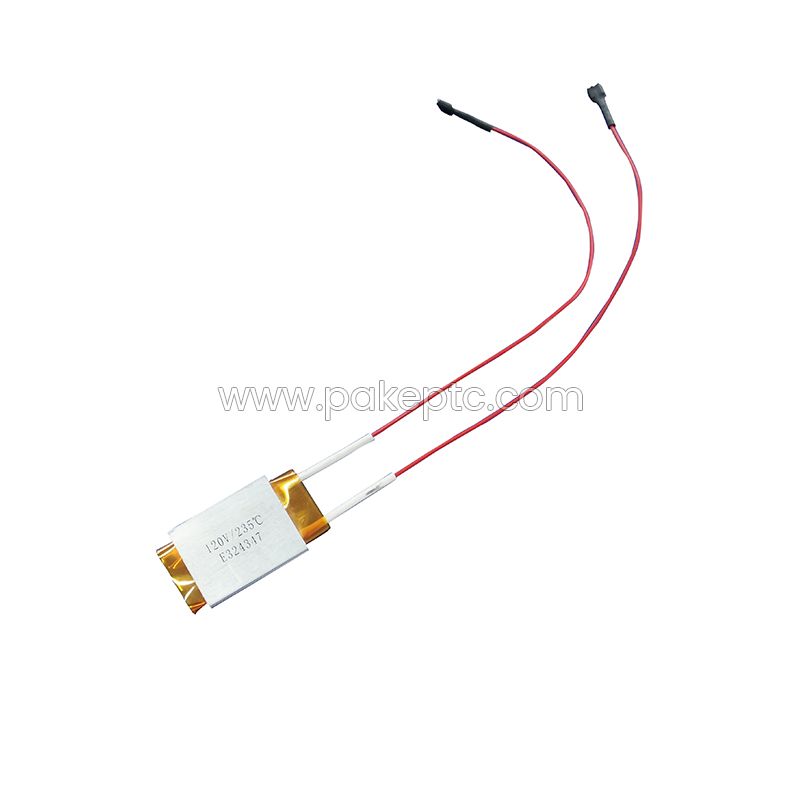Glue guns have become indispensable tools in a wide range of applications, from crafting and DIY projects to industrial manufacturing. At the heart of these versatile tools lies the heating element, which plays a crucial role in ensuring efficient and reliable bonding. In this article, we will explore the functionality, types, and applications of glue gun heating elements, providing in-depth insights into their importance and performance.
A glue gun heating element is responsible for melting glue sticks, transforming them from a solid to a liquid state. This transformation is essential for creating strong bonds between materials. Typically made from metal or ceramic, the heating element transfers heat to the glue, ensuring a smooth and consistent flow when the trigger is activated.

When the glue gun is powered on, electricity flows through the heating element, causing it to heat up. The temperature must be carefully regulated to ensure that the glue melts without burning. Most glue guns operate within a temperature range of 250F to 400F (121C to 204C), depending on the type of glue being used.
A high-quality heating element can quickly reach and maintain the optimal temperature. This is particularly important for time-sensitive projects where fast drying and bonding are crucial. Many modern glue guns also feature temperature control settings, allowing users to adjust the heat according to their specific needs.
There are several types of heating elements used in glue guns, each with distinct advantages:
Metal Heating Elements: These are the most common type and are typically found in standard glue guns. Metal heating elements heat up quickly and are durable, making them suitable for general applications. However, they may struggle to maintain consistent temperatures during extended use.
Ceramic Heating Elements: Found in high-end or industrial glue guns, ceramic heating elements offer superior temperature control and stability. They are less prone to overheating, making them ideal for prolonged use in demanding environments where consistent performance is key.
Dual Temperature Heating Elements: Many modern glue guns feature dual-temperature settings that allow users to switch between high and low heat. This versatility is especially useful for working with different materials or for precision tasks, such as delicate crafting projects.
Glue gun heating elements are essential across a range of industries and applications:
Crafting and DIY Projects: Hobbyists frequently use glue guns for scrapbooking, home décor, and other creative endeavors. The heating element’s quick response time allows for immediate bonding, enhancing the crafting experience.
Industrial Manufacturing: Glue guns are often used in assembly and packaging processes in industrial settings. The heating elements must withstand continuous use while maintaining consistent performance, making high-quality materials essential for durability.
Electronics and Automotive: In the electronics industry, glue guns are used to bond components, while in the automotive industry, they are used for assembling parts. The ability to regulate temperature ensures that sensitive materials are not damaged during the bonding process.
Construction and Woodworking: Contractors rely on glue guns for quick fixes, assembling furniture, and even flooring applications. The reliability of the heating element ensures strong and durable bonds in these contexts.
Proper maintenance of your glue gun’s heating element can extend its lifespan and improve performance. Here are some tips to keep your tool in top condition:
Avoid Overheating: Always allow the glue gun to cool down before storing it. Overheating can damage the heating element and reduce its effectiveness.
Regular Cleaning: Residue from melted glue can accumulate around the heating element, affecting performance. Clean the nozzle and surrounding areas regularly to maintain optimal function.
Use Quality Glue Sticks: Low-quality glue sticks can cause clogs and overheating. Always choose high-quality glue gun heating elements that are compatible for your glue gun to avoid these issues.
Understanding the functionality, types, and applications of high-quality glue gun heating elements is essential for anyone using a glue gun, whether for crafting or industrial purposes. The performance of the heating element directly impacts the effectiveness of your glue gun. By maintaining your glue gun properly and using the right materials, you can ensure optimal performance, making your projects smoother and more efficient.
Comments
Please Join Us to post.
0